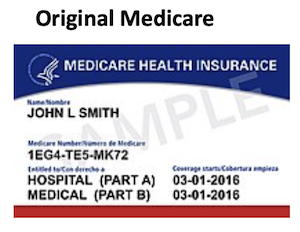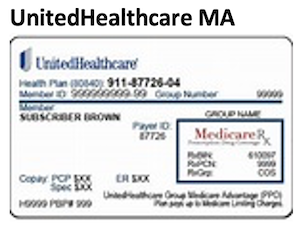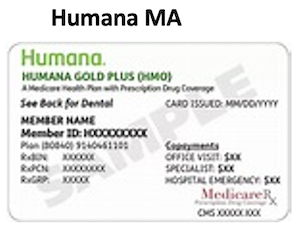It’s Time to Compare 2026 Medicare Health & Drug Plans

Medicare 2026 Open Enrollment is October 15 through December 7, 2025
Each year, patients can compare health and drug plans by using the Medicare Plan Finder on the Medicare website or by getting unbiased, one-on-one information from a trained volunteer with their state health insurance assistance program (SHIP) (these have different names in different states). Patients may want to contact their state SHIP to receive free counseling. They can find their SHIP by clicking on Find Local Medicare Help.
SHIP Volunteers Can Help Patients Learn about Medigap Plans
On the Medicare site, patients can review the Medigap plans sold in their area if they:
Enter their zip code.
Answer questions about age, sex, tobacco use, and click whether they want to see plans that offer a discount for spouses or roommates.
Review a list of plans and what they cover or by monthly premium low to high.
Find out more about who sells the plan with the letter (and benefits) they prefer and its premium. Some price based on attained age (increases with age) while others price based on age when purchased (won’t cost more with age) but may go up with inflation.
Intro to Medicare & Dialysis
Patients with ESRD can have Medicare as a primary or secondary payer if they:
Are U.S. citizens or certain lawful permanent residents (new, more limited definition in Section 71201 of the One Big Beautiful Bill Act1)
Have enough work credits under their work record or a spouse’s work record.

Children with ESRD who are citizens or lawful permanent residents can qualify under a parent’s work record.
When a patient is covered by a job-based plan, this triggers a 30-month Medicare secondary payer period from the date when the patient is eligible for Medicare whether s/he takes it or not. During this time, the job-based plan pays first.
Social Security policy2 advises those with ESRD to enroll in Part A and B together when first eligible or wait to enroll in both parts until after the Medicare secondary payer period ends. NOTE: A patient who enrolls in Part A without Part B when first eligible can enroll in Part B only during the general enrollment period (January-March each year), which can leave a coverage gap if the 30 months ends sooner. Having Medicare as a second payer also blocks providers who accept assignment* from “balance billing” patients the difference between a provider’s full charge and the job-based plan payment—as long as a job-based plan has paid at least 100% of Medicare’s allowed charge. A patient who waits to enroll in Medicare could have out-of-pocket costs with the job-based plan that are more than the Medicare Part B premium.
*Take Medicare’s allowed charge as payment-in-full.
Eligible patients may choose government-sponsored original Medicare (“fee-for-service (FFS) Medicare.”) Or, they may choose an insurance company-sponsored Medicare Advantage (MA) plan, called Part C, that the government subsidizes. CAUTION: Patients who have job-based health plans should check with their employer, union, or plan benefits administrator to make sure the job-based plan will still provide coverage before they enroll in an MA plan. If they do not take this step, they may not be able to get their original Medicare plan back.
Here are examples of insurance cards your patients may have.



ESRD Enrollment in Original Medicare, MA Plans, and Medicare + Medicaid
For better or worse, enrollment in MA plans has been growing rapidly. In January, 2021, the 21st Century Cures Act allowed those with ESRD to enroll in any Medicare Advantage (MA) plan for the first time. Per the United States Renal Data System 2024 Annual Data Report, the percentage of incident (new) ESRD patients with MA plans rose from 16.6% in 2012 to 30.6% in 2022. In 2012, 63.3% of prevalent (established) ESRD patients had Original Medicare. By 2022 just 41.6% of prevalent ESRD patients had Original Medicare. Some patients with limited income and assets have Medicare and Medicaid. In 2022, fewer patients on home PD (22.7%) or home HD (27.6%) had Medicare and Medicaid than those on in-center HD (36.0%).3
MA Plan Complaints Relevant to People with ESRD
With original Medicare plus a Medigap plan, patients can plan on the monthly costs. But MA Plans may:
Bill more charges when someone has a chronic illness like ESRD, and these costs cannot always be planned and may come at a bad time.
Require patients to get a referral from a primary care doctor to see a specialist, which means an extra co-pay.
Deny coverage if the plan considers the care a doctor orders unnecessary. If this happens, patients can appeal. There are five levels of appeals and the doctor can help.4 Knowing how to appeal is important, because in 2022, MA plans denied 7.4% (3.4 million) of the prior authorization requests filed. Far too many patients accept an MA plan’s denial and do not get the care they need or pay out of pocket for care that might have been covered. Fewer than 10% of prior authorization denials were appealed in 2022, but of those appeals, 83.2% were overturned. Almost half of those with MA plans have a plan through either United Healthcare or Humana.5
Original Medicare vs. Medicare Advantage 6
| Original Medicare | Medicare Advantage | |
|---|---|---|
| Doctor & Hospital Choice | Covers any provider that accepts Medicare in the U.S. (50 states + DC, Puerto Rico, U.S. Virgin Islands, Guam, Northern Mariana Islands, American Samoa.) No referral is usually needed. | Fewer choices. Most plans require people to use in-network providers for care or for lowest cost. Some also require referrals from a primary provider. |
| Cost | Most get Part A free & pay a Part B premium, plus an annual deductible and 20% coinsurance.* No yearly cap on costs. Job-based plans, Medicaid or Medigap plans can help to cover Part A & B costs. Many pay Part D plan premium & out-of-pocket costs. | Most pay Part B premiums, and a MA plan may have a premium. Out-of-pocket costs for services and drug coverage vary by plan. Or, patients can pay a premium and out-of-pocket costs for a Part D plan. Medigap plans are available only with Original Medicare. |
| Coverage | Most providers accept original Medicare, which covers most services without prior authorization. No coverage is offered for routine physical, eye exams, or most dental. | MA plans must cover all of the Part A and B services original Medicare covers and may include some other things like dental or vision, but may require prior authorization. |
| Foreign Travel | No coverage. Some Medigap plans may have limited coverage and travel insurance may cover some things with limitations. | Most do not cover outside the U.S. and territories. Some may cover emergency services if traveling. |
* People with limited income and assets can apply for help to pay Medicare costs through Medicare Savings Programs and Part D Extra Help.
Common Types of MA Plans:
Health Maintenance Organization (HMO) plans pay only when patients see in-network providers, with exceptions for emergencies, urgent out-of-network care, and temporary out-of-network dialysis.
Preferred Provider Organization (PPO) plans pay in-network providers at a higher rate and other providers who are not in the plan’s network at a lower rate. Patients have more options in a PPO than in an HMO, but non-network providers cost more.
Special Needs plans (SNP) may be HMOs or PPOs and are for those with Medicaid, who are in a nursing home or have one or more chronic conditions. Prior to the Cures Act, there were a few SNPs for ESRD.
Private Fee-for-Service (PFFS) plans allow patients to choose any provider that accepts Medicare. Some PFFS plans have a provider network and if patients see someone out of the network, they’ll pay more.
Steps for Patients During Open Enrollment
Compare MA Plans and Keep a Plan or Switch to a New One:
 Log in to Medicare Plan
Compare with an email address and password to get
personalized information for 2025 or 2026 (defaults to 2026).
Log in to Medicare Plan
Compare with an email address and password to get
personalized information for 2025 or 2026 (defaults to 2026).Enter the home zip code.
Choose to look at MA (Part C) plans.
Click what, if any, help the patient gets to pay Medicare health or drug costs.
Enter all drug names, doses, and frequencies to learn drug costs. Enter a few letters for the program to find a drug or look at an A-Z list of drugs.
Enter the name and location of a pharmacy to use. The program will say if a pharmacy is “preferred” (usually lower cost) or not.
Confirm that preferred providers are in network on the MA plan’s site. Add up to 5 providers to see if they are included. As of 2026, CMS will allow those who choose a plan and learn any preferred provider is not in network to change plans within 3 months.
View the plans. The program defaults to sort plans by the lowest premium and drug costs. Patients can also choose to look only at HMOs, PPOs, or PFFS plans or see if they qualify for any SNP. They can filter by extra benefits, insurance companies, and even providers who must be in the plan. The plan list will say if the plan covers drugs, which providers are in network, and the costs per year for in-network and out of network. Patients can look at plan details to see more specific costs.
Decide whether to enroll, which can be done on this site. When switching health plans, an old plan will end on 12/31 and a new plan will take effect on 1/1.
Switch from Original Medicare to an MA Plan or Vice Versa
When patients switch from an MA plan to original Medicare, they can buy a stand-alone Part D plan and may want to see if they can get a Medigap plan unless they have other coverage to help pay Medicare costs. See below to learn more about Medigap plans.
Compare a Medicare Drug Plan (Part D) with Others Sold in Their Area:

Log in to Medicare Plan Compare with an email address and password to get personalized information for 2025 or 2026 (defaults to 2026).
Enter the home zip code.
Choose to look at Part D plans.
Click what, if any, help a patient gets to pay Medicare health or drug costs.
Add all drug names, dosages, and frequencies to see drug costs by plan. Enter a few letters for the program to bring up a drug to click on. As an option, look at an A-Z list of drugs. Once a patient uses the site, it will keep a list of drugs to edit as needed.
Enter the name and location of a pharmacy. The program will say if the pharmacy is “preferred” (usually lower cost) or not.
View the plans. The program defaults to sort Part D plans by the lowest premium and drug costs. Patients can choose a different sort and can filter by insurance carriers and star ratings. The list of plans will say if a plan covers the drugs listed and what the costs are per year for those drugs and the premium. They can look at plan details to see more specific costs.
Decide whether to enroll on this site. There is no need to contact an old drug plan to disenroll before enrolling in a new plan. The old plan will end at 11:59 p.m. 12/31 and the new plan will start 12:00 a.m. on 1/1.
This 6-minute step-by-step video explains
how to enter drugs, choose a pharmacy, and review Part D plans on the
Medicare website. 
Compare Medigap (Medicare supplement) Plans for Original Medicare
Patients who choose original Medicare can buy a Medigap plan from an insurance company to cover most out-of-pocket costs. Medigap plans do not coordinate with MA plans. Federal law requires companies to sell Medigap plans to those 65 and older for 6 months after they enroll in Part B even if they have a pre-existing health condition like ESRD, or within 63 days when other coverage ends. Most states do not require companies to offer affordable Medigap plans for those under 65 with ESRD. Dialysis Patient Citizens is advocating for Medigap access for people with ESRD and had success this year in Nevada and Texas. Read about Medigap, view a map that shows state grades (A-F) for providing access to Medigap for those under 65 with ESRD, and join DPC’s Medigap advocacy effort here.
Finally, Expect to See Changes in Medicare in 2026
The Medicare Plan Finder site added MA network providers, but there are data issues. In the past, those comparing MA plans had to go to an MA plan’s website to find the plan’s list of network providers. Unfortunately, the Medicare Plan Finder data may not accurately list MA plan network providers. As a fix, CMS is allowing a 3-month special enrollment period in 2026 for those who learn that their providers are not in-network.
People who enrolled in a 2025 Medicare Prescription Payment Plan that let them pay their annual drug costs in monthly payments will be auto-enrolled in 2026 unless they opt-out.
The government negotiated with drug companies to get lower costs for 10 drugs in 2026 in Medicare drug plans. They are attempting to get lower costs for 15 more drugs in 2027.
Monthly insulin costs will be limited to $35 with no deductible.
Vaccines the Advisory Committee on Immunization Practices(ACIP) approves will have no deductible or cost sharing in Part D. Read about Part B/D vaccine coverage here.
Medicare Part A and B premiums and deductibles are expected to rise; Part D and MA plan premiums may decline a little. CMS normally publishes these figures in mid-October, but they have not published them yet.
The Part D drug cap is increasing by 5% from $2,000 to $2100 and the Part D deductible will be capped at $615 (or less). After meeting the deductible, patients pay 25% of the cost of drugs until the $2,100 cap is reached.
CMS’ Wasteful and Inappropriate Service Reduction (WISeR) Model will require prior authorization for the devices listed below for those with traditional Medicare in AZ, NJ, OH, OK, TX, and WA. This pilot will run from 1/1/2026 through 12/31/2031. Doctors will need to complete prior authorization paperwork, which may cause delays or denials for services that would be Medicare-covered in other states. Patients may want to ask their providers if they may need any of these devices before this takes effect 1/1/2026.
Percutaneous Image-Guided Lumbar Decompression for Spinal Stenosis (NCD 150.13)
Arthroscopic Lavage and Arthroscopic Debridement for the Osteoarthritic Knee (NCD 150.9)
Induced Lesions of Nerve Tracts (NCD 160.1)
Vagus Nerve Stimulation (NCD 160.18)
Phrenic Nerve Stimulators (NCD 160.19)
Electrical Nerve Stimulators (NCD 160.7)
Incontinence Control Devices (NCD 230.10)
Sacral Nerve Stimulators for Urinary Incontinence (NCD 230.18)
Diagnosis and Treatment of Impotence (NCD 230.4)
Percutaneous Vertebral Augmentation for Vertebral Compression Fracture (L34106, L38201, L35130)
Epidural Steroid Injections for Pain Management (L39015, L39240, L36920)
Cervical Fusion (L39741, L39758, L39793)
Hypoglossal Nerve Stimulation for Obstructive Sleep Apnea (L38307, L38312, L38385)
Application of Bioengineered Skin Substitutes to Lower Extremity Chronic Non-Healing Wounds (L35041) and Wound Application of Cellular and/or Tissue Based Products (CTPs), Lower Extremities (L36690)
Deep Brain Stimulation (NCD 160.24) – implementation delayed and will not occur on January 1, 2026; to be re-evaluated for implementation in a future performance year

Medicare Advantage Open Enrollment Period
MA plans have another enrollment period from January through March annually for those who want to switch MA plans or switch to Original Medicare. The same cautions apply as mentioned previously about switching from an MA plan to Original Medicare—the need to buy a Part D plan and seeing if patients can get a Medigap plan if s/they don’t have other coverage to pay Medicare out-of-pocket costs.
Conclusion
There is a lot to consider each year when Medicare provides open enrollment for health and drug plans and reviewing plans takes time and energy that home dialysis patients may not have. Some people make the mistake of assuming their coverage this year will be the same next year. That may or may not be true.
Be sure to encourage patients to take this opportunity to make sure they will have the best health and drug plan for cost, coverage, and convenience next year. Insurance brokers may suggest MA plans, but they are paid by insurance companies and they may be biased. State health insurance assistance programs are funded by the federal government and offer free unbiased counseling. Asking for their help can make the process less confusing and frustrating.
One Big Beautiful Bill Act. Chapter 2, Section 71201. https://www.congress.gov/119/plaws/publ21/PLAW-119publ21.pdf↩︎
Social Security Program Operations Manual. HI 00801.247 Medicare as Secondary Payer of ESRD Benefits. https://secure.ssa.gov/apps10/poms.nsf/lnx/0600801247↩︎
United States Renal Data System. 2024 USRDS annual data report: Epidemiology of kidney disease in the United States. National Institutes of Health, National Institute of Diabetes and Digestive and Kidney Diseases, Bethesda, MD, 2024. https://usrds-adr.niddk.nih.gov/2024/end-stage-renal-disease/9-healthcare-expenditures-for-persons-with-esrd↩︎
Appeals in Medicare Health Plans. https://www.medicare.gov/providers-services/claims-appeals-complaints/appeals/medicare-health-plans↩︎
KFF. Medicare Advantage Plans Denied a Larger Share of Prior Authorization Requests in 2022 Than in Prior Years. August 8, 2024. https://www.kff.org/medicare/medicare-advantage-plans-denied-a-larger-share-of-prior-authorization-requests-in-2022-than-in-prior-years/↩︎
Compare Original Medicare and Medicare Advantage. https://www.medicare.gov/basics/get-started-with-medicare/get-more-coverage/your-coverage-options/compare-original-medicare-medicare-advantage↩︎


Comments